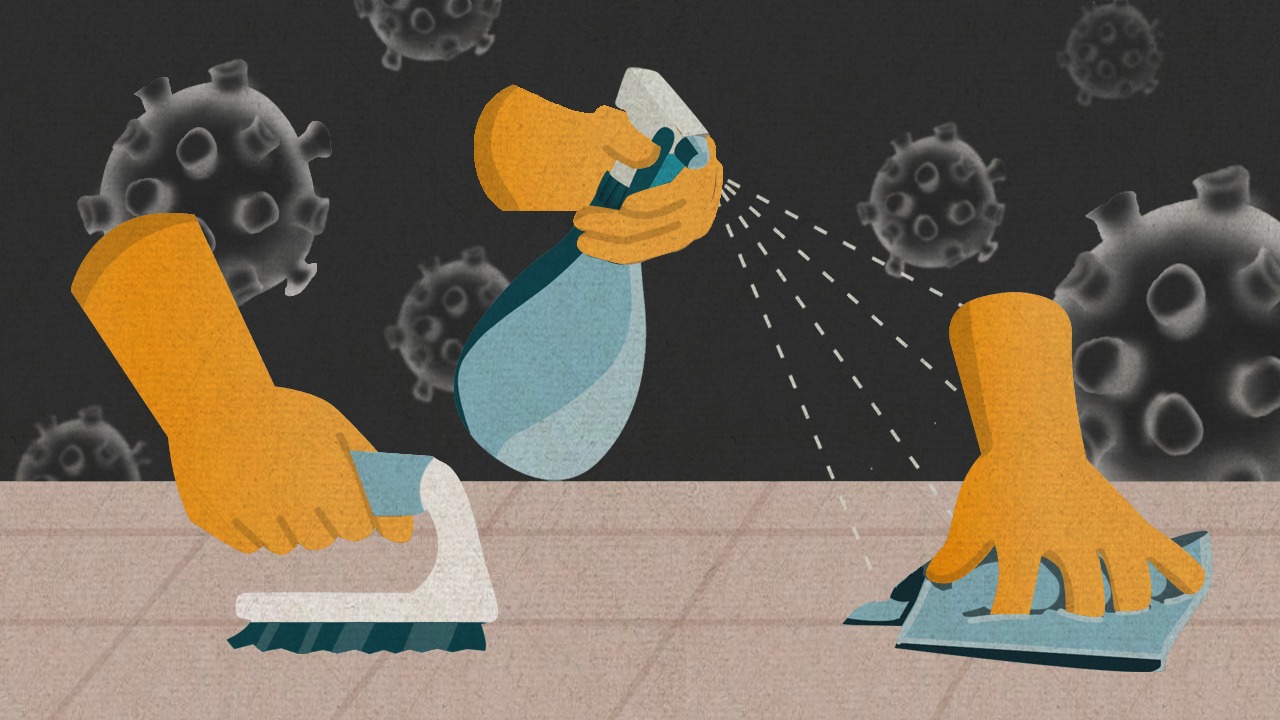Constant vigilance, rigorous preparation, and thorough prevention are key skills that are especially needed at a time of a global pandemic. As the industry continues to see significant damage by the day, the foodservice and beverage sector must employ ways to protect its businesses and the people behind them.
Among these measures that will safeguard company operations are cleaning, sanitizing, and disinfecting. What’s the difference between these three? What are the standards businesses must adhere to and how will they be able to implement these guidelines?
We asked Glenn Hyde Dela Cruz, vice president for program development and food inspection services of the Food Safety and Hygiene Academy of the Philippines to tell us about the organizational procedures that need to be observed when dealing with a global health crisis.
What’s the difference between cleaning, sanitizing and disinfecting?
Cleaning: The removal of visible dirt or soil on a surface using potable water and detergent. This can eliminate microorganisms but it can’t really kill them. This is the first step before sanitizing as the use of sanitizer cannot be optimized if there’s still dirt or soil on a surface.
Sanitizing: The process of reducing the number of microorganisms or germs on a surface to a safe level with the use of a chemical agent (sanitizer) or a thermal agent (boiling water). After cleaning, the surface should be sanitized for the purpose of reducing organic matters that can’t be seen by the naked eye. Sanitizing will not be effective if we don’t clean the surface first.
Disinfecting: It is similar to sanitizing as it reduces the number of germs on a surface by killing with the use of a disinfectant. Usually the effect of disinfecting is greater than sanitizing as it kills infectious bacteria, fungi, and viruses.
Cleaning can be done with the use of potable water and antibacterial detergent as well as cleaning implements like rubbing or scrubbing brush. Sanitizing and disinfecting can be done with the use of approved sanitizer or heat.
What are the things that need to be cleaned, sanitized, and disinfected, particularly in foodservice establishments?
All food and beverage establishments must implement a strong foundation program when it comes to cleaning and sanitizing. Microorganisms are everywhere, meaning all surfaces, especially food and beverage contact surfaces, must be cleaned and sanitized. Examples of food and beverage contact surfaces that need to be cleaned and sanitized include:
- Chopping boards
- Knives
- Utensils
- Food containers
- Preparation tables
- High-risk equipment
Examples of hand-controlled or hand-contact surfaces that need to be cleaned and sanitized:
- Taps
- Switches
- Door handles
- Cleaning utensils
- Garbage bins
Basically, all surfaces that may pose a risk of contamination and cross-contamination.
How often should each of these measures be carried out?
Food and beverage establishments must develop a simplified standard operating procedure for their employees to follow. Employees must be trained on the basic steps on how to conduct cleaning, sanitizing or disinfection and most importantly, on the use of chemical agents. In order for it to be done effectively, food business operators must provide all necessary resources for employees to comply with the procedures. A cleaning and sanitizing program is not optional—it should be mandated to protect customers and prioritize public health especially during outbreaks.
Cleaning can be done with the use of potable water and antibacterial detergent as well as cleaning implements like rubbing or scrubbing brush. Sanitizing and disinfecting can be done with the use of approved sanitizer or heat. When using a sanitizer, the end user must strictly follow the recommendations of manufacturers especially on the concentration and contact time.
Activities must be carried out as often as necessary. All food and beverage establishments must have defined cleaning and sanitizing schedules. The best example would be a “before and after use” instruction. All chemical containers must be labeled properly and stored in designated areas.
How can businesses ensure that these procedures comply with local and international standards? And do these apply to small businesses (such as food stalls and kiosks) as well as home businesses?
Most government and private inspectors give emphasis on the existing control measures that businesses have during food safety, hygiene, and sanitation inspection. The assistance of a third party inspection body may help in ensuring the efficiency of the existing cleaning and sanitation program.
A cleaning and sanitizing program is applicable to all establishments such as hotels, resorts, and restaurants. It also includes food processing and cold storage, supermarkets and groceries, fast food chains, convenience stores, and retailers. School canteens, hospitals and care homes, and even individual houses can employ a program such as this. This is to ensure the health and safety of customers, employees and all interested parties of the organization.
What are the food safety guidelines local businesses should observe, especially during a virus outbreak?
We cannot completely eliminate food safety risks but it can be reduced if we follow proactive measures rather than reactive approaches.
Here are some food safety and hygiene practices you can follow:
- Informing employees on proper hand washing and personal hygiene practices
- Proper cleaning and sanitizing of raw materials and ingredients, food contact surfaces and other equipment
- Cooking food thoroughly
- Keeping the workplace clean
- Use of personal protective equipment (like masks)
Food safety programs must be well implemented and verified with or without a virus outbreak.
The implementation of control measures must follow the requirements and guidelines from the government. This includes the Code of Sanitation of the Philippines (PD 856), the Food Safety Act of 2013 (RA 10611) and other international guidelines on infection control. Food establishments need to designate a food safety compliance officer who will champion the implementation of the program together with the support of the food business operators and the management.





